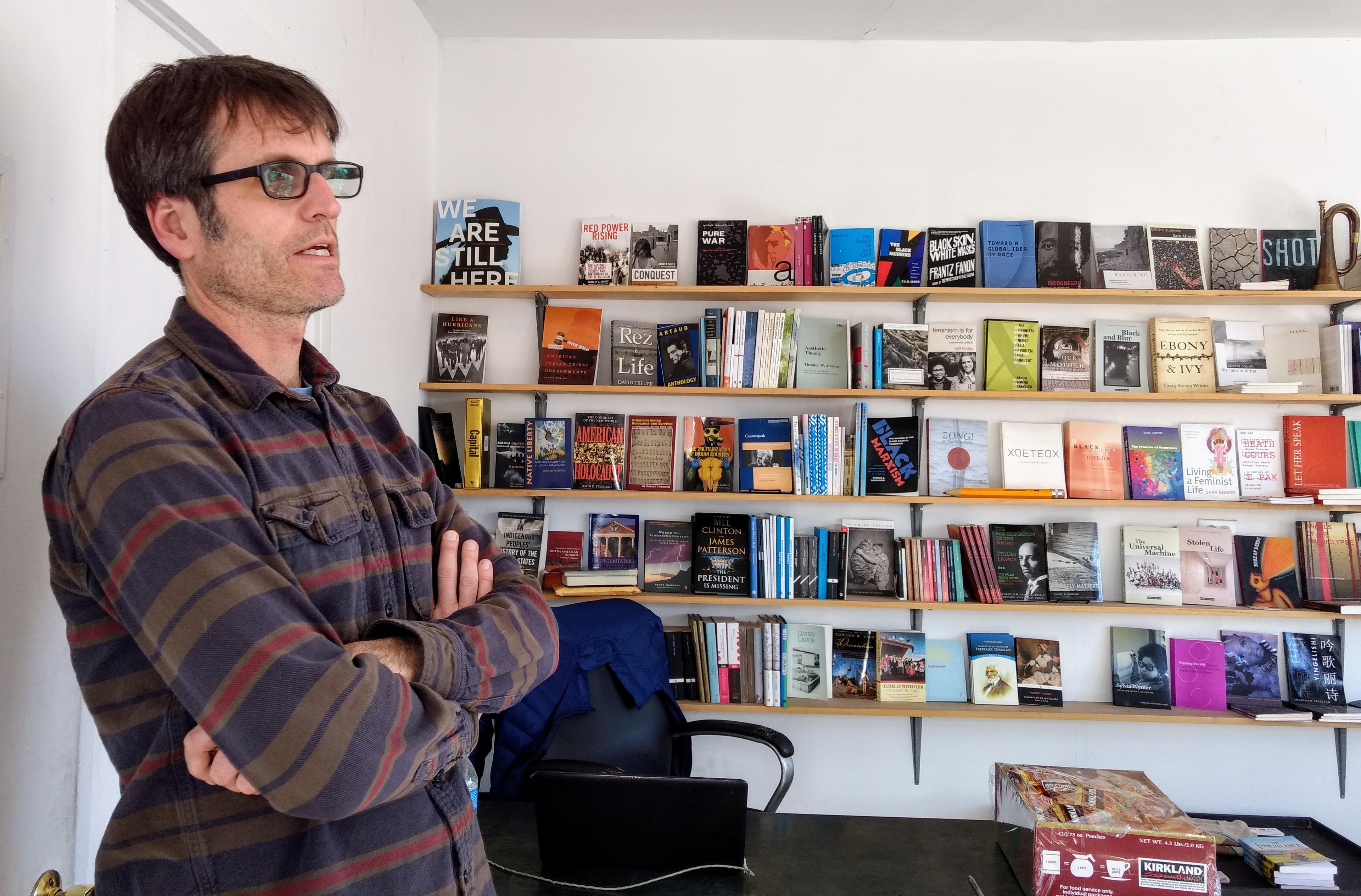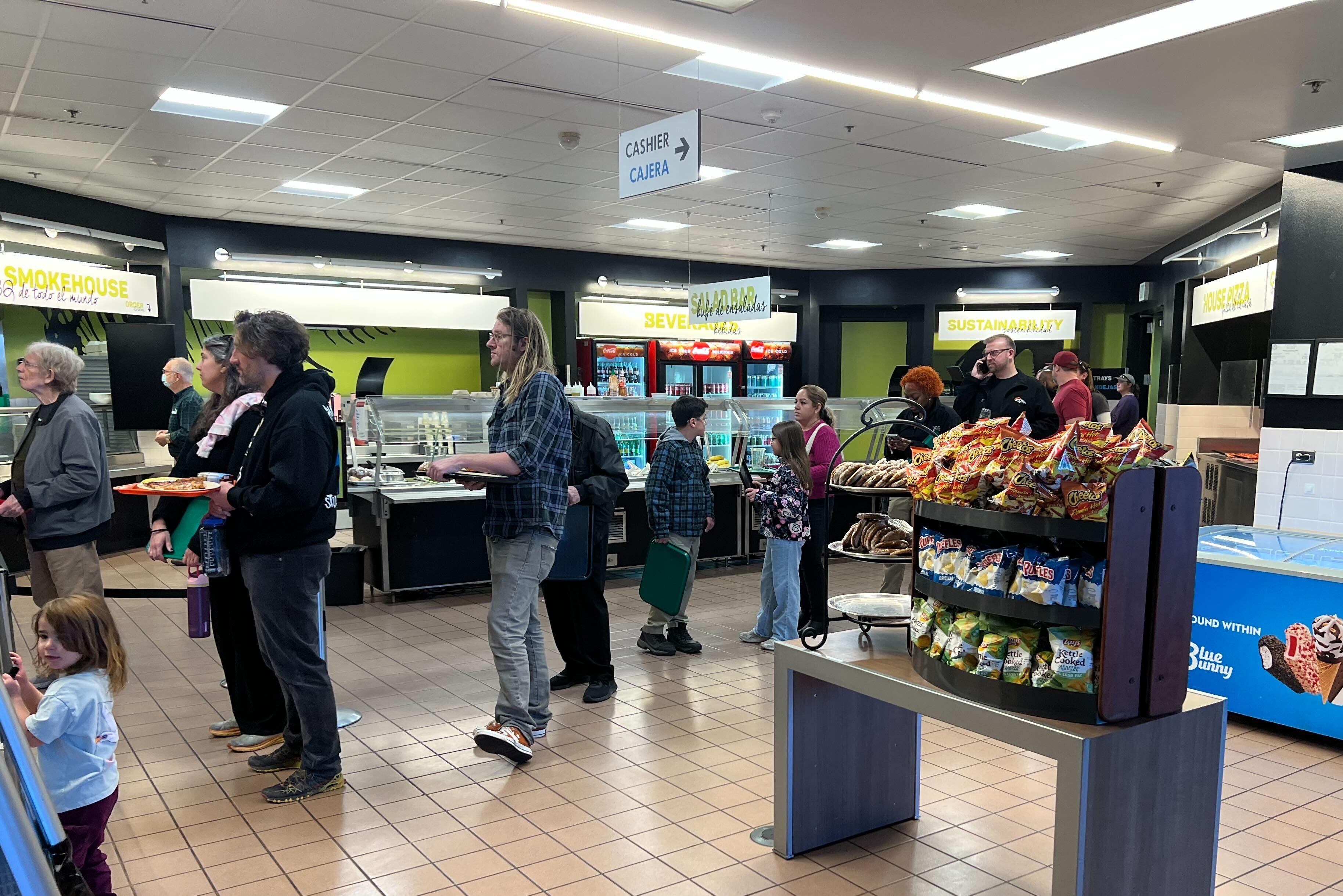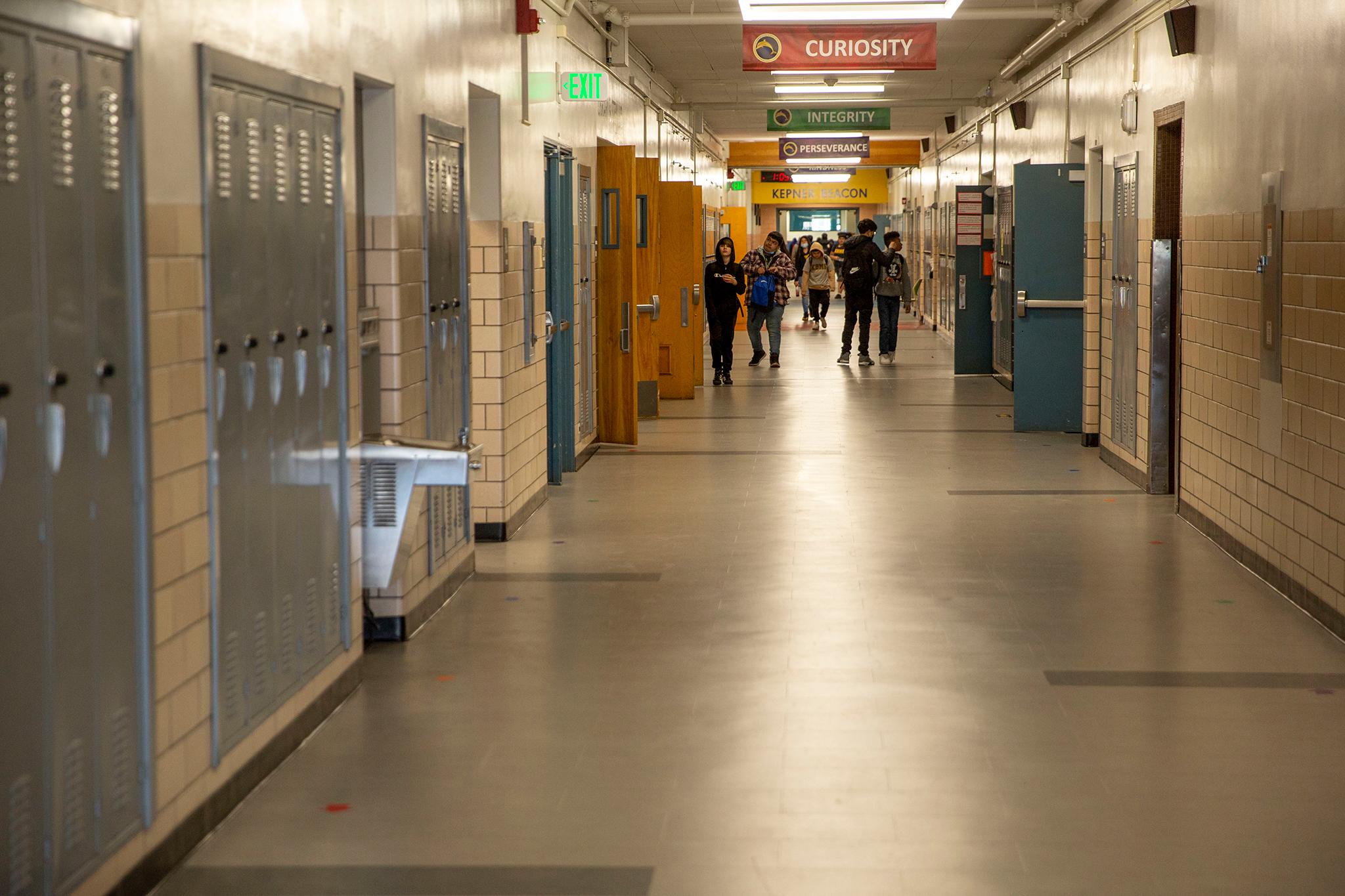After moving his small press to a 65-year-old converted gas station in East Colfax, Tim Roberts used the space where mechanics once worked on cars for readings.
Soon, there were movie screenings and art installations at Roberts's Counterpath, which also has a bookstore. And a community garden in the side yard. And meetings of the East Colfax Neighborhood Association, which just chose Roberts as its president.
And now shelves in the office next to the garage are lined not just with books -- by Frantz Fanon, CLR James, Antonin Artaud -- but with bags of pasta, cans of chili, bricks of instant ramen noodles. The East Colfax Neighborhood Association has started a weekly food pantry at Counterpath, at 14th and Tamarac, near where Denver meets Aurora.
"What we're trying to do ... is really respond to the neighborhood and the people that are living here," said Roberts, who moved Counterpath from 22nd and Welton to East Colfax in 2015. "We're really looking at a neighborhood that is primed for a lot of changes. We want to be responsive."

Ruth Hart Segal, spokeswoman for the Hope Communities affordable housing nonprofit, said Roberts's neighbors are in "huge need."
She said surveys of the 300 or so residents of Hope's Hidden Brook Apartments, a few blocks east of Counterpath, show at least a quarter visit a food pantry at least once a month and half receive help from the federal government's Supplemental Nutrition Assistance Program, often referred to as food stamps. Hope has considered raising money to start its own pantry at Hidden Brook, Segal said. If it does, Hope will try to cater to diverse tastes -- some three-quarters of Hidden Brook residents are refugees, Segal said.
City statistics compiled to support the area planning effort show that of East Colfax's estimated 11,000 residents, 42 percent are living below the poverty line, calculated at earnings of about $24,000 a year for a family of four.
"The East Colfax neighborhood stands out for everything that goes along with high poverty, everything that goes along with displacement," Roberts said.
The city considers a neighborhood's residents vulnerable to displacement if two of these three demographic descriptions apply:
- a higher number of renters than Denver in general;
- a lower annual household income;
- a lower number of adults with at least a bachelor's degree.
East Colfax checks all three boxes. Just over 70 percent of its homes are occupied by renters, compared to 45 percent across the city. East Colfax's median household annual income is $36,124, well below the Denver-wide median of $53,637. And 36 percent of the area's adults have at least a bachelor's degree, compared to 45 percent for all Denver.
The growth at the Anschutz medical, veterans and research further down Colfax Avenue and a proposed BRT system along that storied arterial make the G-word part of the neighborhood conversation. The possible impact of gentrification seems like too much for a neighborhood association to grapple with. But it can help residents save on food, leaving more for other basics, Roberts reasons. The percentage of East Colfax families that are housing-cost burdened -- spending more than 30 percent of their income on rent or mortgages and related costs -- is 46 percent, and nearly one in five spend more than half their earnings on housing, according to city figures.
The Monday before Jan. 25, the first Friday the pantry was open, Roberts put out word via email and Nextdoor that the association was seeking donations. Neighbors made special trips to Costco. A woman who had moved elsewhere in Denver but was still on the East Colfax listserv said her son had recently celebrated his third birthday by asking party guests to bring food for the needy. She had been trying to decide where to take the donations and chose Counterpath after receiving Roberts's message.
Roberts also has been strolling East Colfax handing out red, postcard-sized flyers asking people to join the neighborhood association and telling them about the food pantry. That first Friday, about four families left with five or six grocery bags of food, he said. Plans are to be open every Friday afternoon for two hours. If the neighborhood association does not find many people are using the pantry at Counterpath, the food collected might be shared with pantries further west and north that serve the larger region.
Food Bank of the Rockies, the region's main food bank, works mainly with pantries at schools, churches and community centers. But a pantry alongside books is not entirely unprecedented. The SouthWest Improvement Council operates a food pantry at its headquarters at the Westwood Community Center, which is also home to the Westwood Branch Library.
If the East Colfax Neighborhood Association has discovered community is not built by books alone, across town Re:Vision has seen bread also is not enough. Joseph Teipel, co-founder and executive director of the food access, production, and justice organization, said Re:Vision is planning a building renovation to house an art gallery along with a commercial kitchen, classroom and retail space.
Teipel said art and culture, while not central to Re:Vision's mission, could help strengthen a sense among west Denver residents that they belong, giving them energy to take other steps to resist displacement.
"Arts and culture and building a home for local artists is a community desire," Teipel said.













